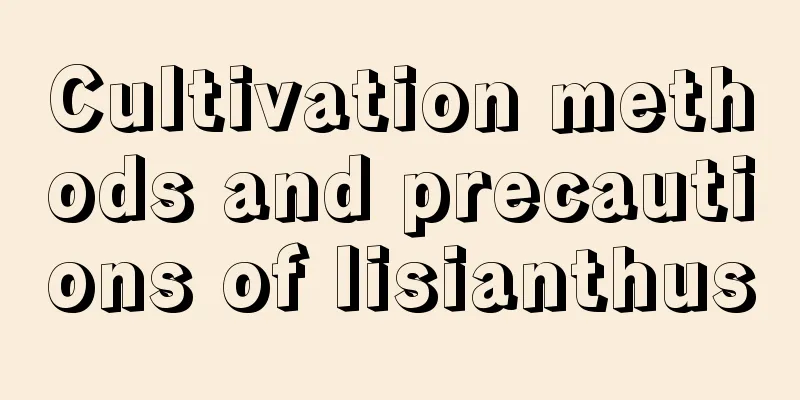Cultivation methods and precautions of lisianthus

How to grow lisianthustemperatureThe suitable growth temperature of lisianthus is 15℃-28℃. It can tolerate the low temperature of 0℃ for a short time. The night temperature during the growing season cannot be lower than 12℃. If the temperature is lower than 5℃ in winter, the leaves of lisianthus will become rosette-shaped and will not bloom. If the temperature is higher than 30℃ in summer, the flowering time of lisianthus will be shortened. WateringLisianthus likes a humid environment, but too much water will damage the roots of Lisianthus and make it prone to disease. Too little water will weaken the growth of the plant and bloom earlier. Therefore, watering should be moderate and not excessive. illuminationLisianthus prefers a warm, well-lit environment. Long-term light helps the growth of stems, leaves and flower buds, so it is best to maintain 16 hours of light a day. soilLisianthus prefers fertile, loose, well-drained soil. It is best to use improved garden soil with peat soil, rice bran and a small amount of lime. Things to note when growing lisianthusUse drip irrigationLisianthus has very strict requirements for water. Too much water will damage the roots, and too little water will cause the stems and leaves to grow weak, so it is best to use drip irrigation, which is most beneficial to the growth of Lisianthus. Disinfect the potting soilIf you want to plant lisianthus in a pot, the substrate used needs to be treated with high-temperature steam or bromomethanol for disinfection, and the pH value of the soil should be maintained at 6.5-7.0. Avoid high temperature and humidityAfter the flower buds are formed, it is necessary to avoid high temperature and high humidity environments, otherwise it is very easy to cause fungal diseases. Control the amount of fertilizerBefore planting lisianthus, add manure, bone meal, etc. as base fertilizer to the soil. Because lisianthus has a relatively large demand for fertilizer, it is necessary to apply fertilizer in time during the growth process. |
<<: Related species of King Protea
>>: Cultivation methods and precautions of purple flowers
Recommend
How to cook Houttuynia cordata, does it taste strong?
1. Method 1. Soak in water and drink: If you like...
How to plant cosmos seeds
Season Selection If you need it to bloom in summe...
If you cut the branches of a pomegranate once, it will take root in 15 days and you will have more fruits than you can eat when it grows up.
I don’t know if you like to eat pomegranates. Pom...
Where is the best place to plant Atractylodes lancea?
Atractylodes lancea cultivation area Generally, A...
Flammulina velutipes cultivation technology
There are many kinds of edible fungi in China. Th...
What vegetables are suitable to grow in September?
What vegetables are suitable to grow in September...
What to do if the rose wilts
1. Reduce watering Reason: If water accumulates i...
What fertilizer is best for money bag
Fertilization time of money bag When planting the...
Time and method of planting taro in the north
Taro planting time in the north Taro in the north...
If you don’t take care of the succulents at home, they will die in 3 days and it will be difficult to revive them!
How to protect succulents from rain? There is a l...
High-yield planting technology of edamame
Edamame is actually young soybeans . It is named ...
Characteristics of dandelions, what do dandelions look like?
1. Appearance characteristics 1. Roots: Dandelion...
How to propagate five-color flowers and precautions
Five-color flower reproduction method There are m...
What is the best month to plant sesame?
When to plant sesame Sesame is mainly propagated ...
Which month is suitable for planting single garlic?
When to plant single garlic Single garlic is usua...









